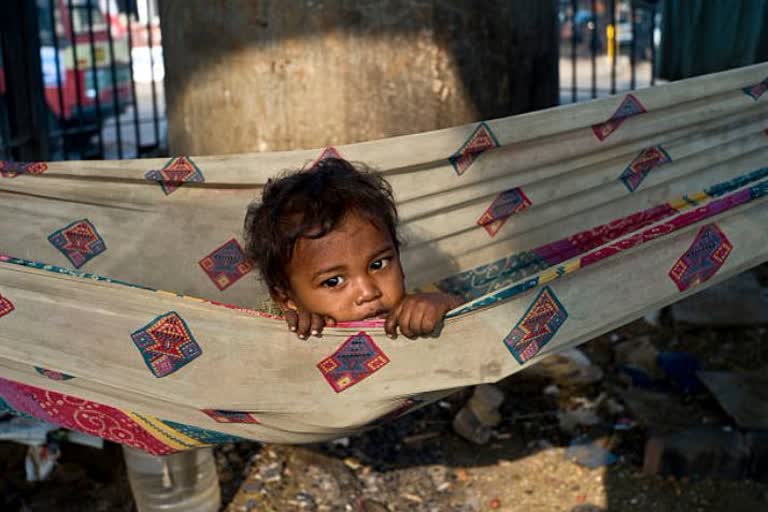Hyderabad:Independent India which aimed for a society free of poverty, hunger and disease is still far from achieving its targets after 70 years of freedom. Even today, crores of people are dying of hunger in India.
Neighbouring countries like Pakistan, Nepal and Sri Lanka are faring much better than our country. In the Global Hunger Index (GHI), India ranks 102 out of 117 surveyed countries. This is the lowest rank in entire South Asia. India ranked lowest among BRICS nations too.
According to GHI, 20.8 per cent of children under 5 years of age are wasted and 37.9 per cent are stunted in India. The fact that 90 per cent of infants between 9 months and 23 months of age are devoid of proper nutrition is alarming.
The GHI which surveys various parameters like malnutrition-impact on growth, infant mortality rate shows that our nation has it worst. 5 years ago, we stood 55th out of 76 surveyed nations. The current rank illustrates our laidback approach to alleviating poverty. When the nutritional needs of children are not met, their growth is impacted and their development is hindered. It is not just the future of kids that are affected in the process but the nation’s progress as a whole will suffer.
Several scientific studies proved that the first thousand days from the start of pregnancy is crucial for a child’s brain functioning. This proves how crucial mother and child health is. India has launched Integrated Child Development Services (ICDS) in 1975 to provide food, nutritional requirements, primary healthcare and immunization services to children under 6 years of age and their mothers.
Read more:What China's woes mean for India?
National Food Security Act (NFSA) has been enacted in 2013 to supply subsidized food grains. Innumerable poverty alleviation and social welfare schemes have been launched in the past few decades. Public money worth thousands of crores was lost due to loopholes in the planning and implementation of these schemes.
In 1997, Bangladesh had the highest percentage of stunted children. The nation took several measures like educating the mothers, improving hygiene and monitoring public health to combat the issue. Even Nepal has put considerable efforts in improving the health of pregnant and nursing mothers. While tiny nations which started welfare schemes much later than India are on the path to development, why are our lofty plans failing? India dropped by 33 ranks in the last 3 years in the GHI due to its dismal state of public health.
The Economic Survey of 2019 highlighted that India is the world’s fastest-growing economy. Only China and India recorded 6 per cent growth in GDP at a time when the entire world is facing setbacks due to recession. China is set to achieve a poverty-free society by 2020 by turning each citizen into an effective human resource. Australia, Finland and Switzerland are some of the top ranked nations in GHI, thanks to their impeccable public health record. In a nation where NITI Aayog proudly proclaimed its aim to achieve double-digit growth rate by 2022-23; social maladies like malnutrition, infant mortality, subpar education and epidemics are a regular occurrence.
Why these distorted growth rate numbers when half the population is struggling to stay alive? The top 1 per cent of Indian billionaires got richer by 39 per cent in 2018 alone. The bottom-half cannot even comprehend terms like development, wealth and growth. Strengthening Anganwadi centres and reforming the public health and education systems will help revive the nation. A nation’s progress which reflects in improved quality of its citizens’ lives will help raise ranks on an international level.
